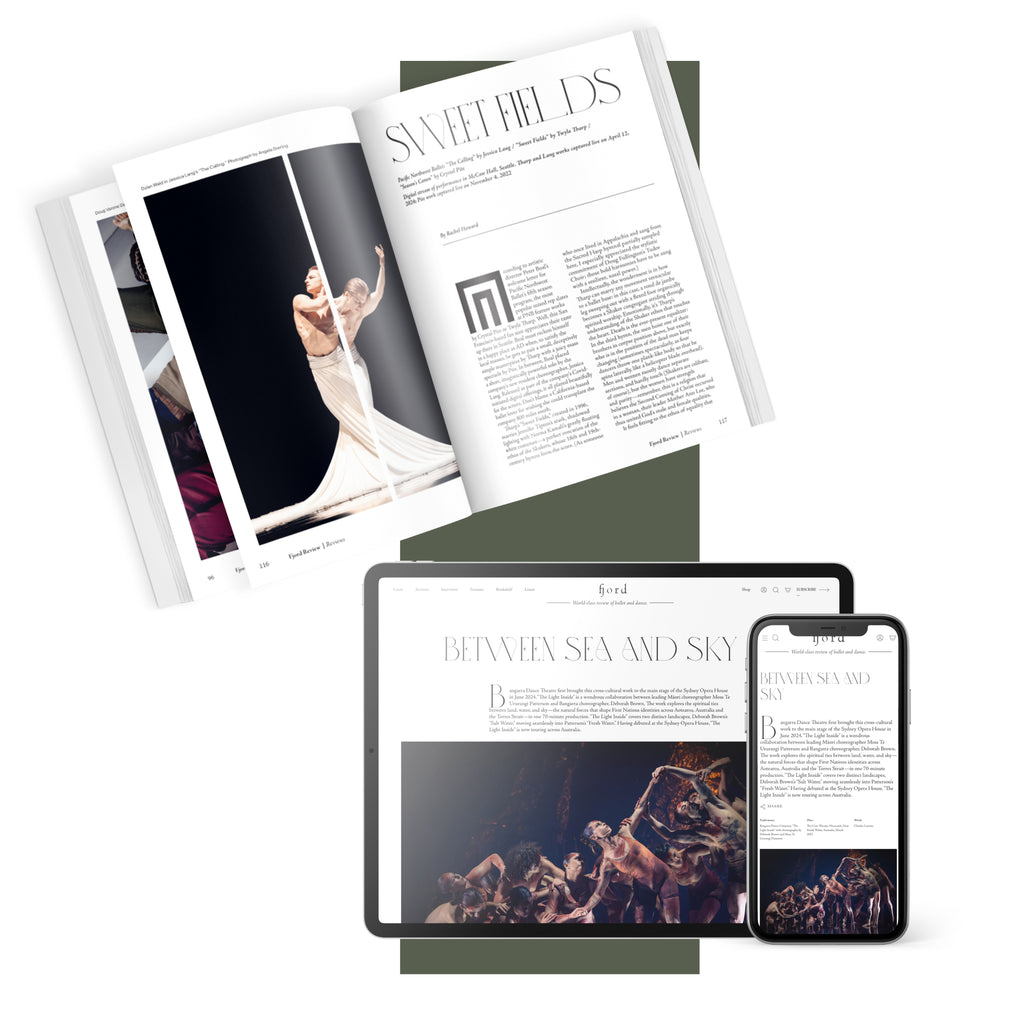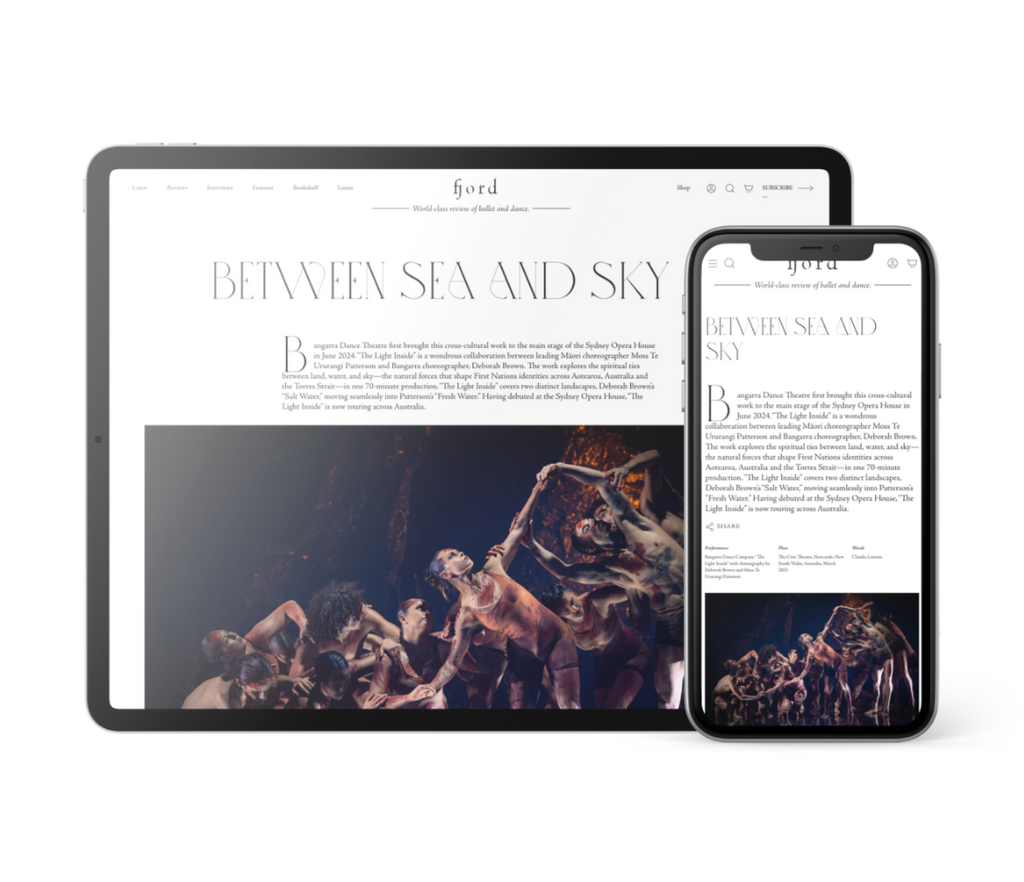Non-linear in structure, Neumeier has created what he refers to as “a biography of feelings and sensations” in his arrangement of “choreographic approaches to the enormous theme” and it begins in “a moment of transition.”[4] Though we may be in the Suvretta House Hotel in St. Moritz, Switzerland, the ballet truly begins within Nijinsky’s mind, with Linnane, as Nijinsky, fragmented, magnetic, haunted. Linnane has made the stage his canvas, just as Nijinsky, as choreographer, created an experience of totality, spanning light to dark. His Nijinsky was sublime, threatening and threatened.
Etched in my memory, Nijinsky making a star formation with his legs, whilst atop Maxim Zenin’s Serge Diaghilev’s shoulders, and the fingertip connection he sought, with open palm facing the audience. From the menace of Diaghilev’s slow clap from the sidelines, indicative of the power imbalance between the two and alluding to strings pulled, to Diaghilev pressing Nijinsky into the floor and delighting in his power over another, “Nijinsky” looks at the acrimonious split with Diaghilev, and, by turn, the Ballet Russes. With each time Nijinsky was cradled in Daghilev’s arms, something further had shifted.
Nijinsky devotee, Neumeier, has studded his ballet with details and interpretations for ballet fans and history buffs. And so, Neumeier gives us Nijinsky counting time, atop a chair, during “The Rite of Spring” (“Le Sacre du printemps”), with its nod to “primitive” Russian folk dancing, as Jill Ogai stamps her feet with growing intensity and shakes her head from side to side, her face momentarily obscured by her hair as it whips back and forth. Her hands, with splayed fingers, framing her abdomen, her arms making two triangular forms, piercing the space around her.











comments